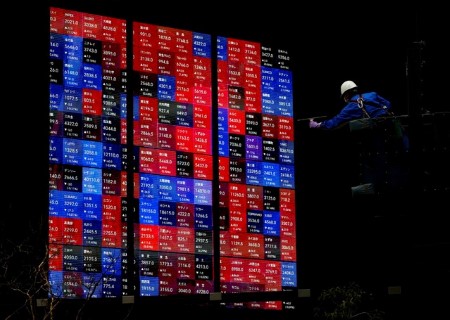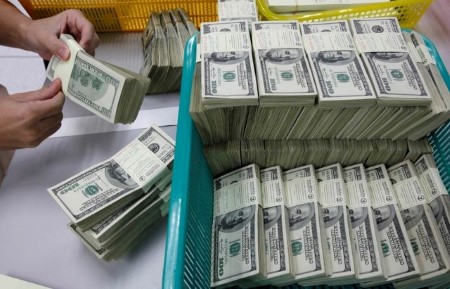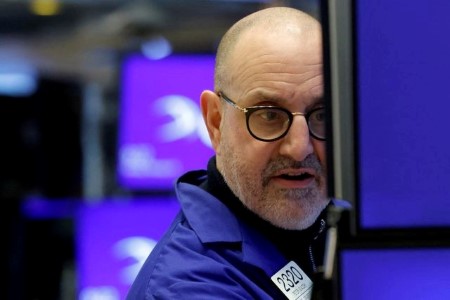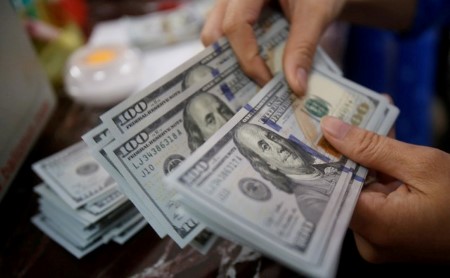LONDON/FRANKFURT – The European Central Bank said late on Thursday it had fixed an unprecedented outage in its payment system which had left transactions likely worth trillions of euros from companies, consumers and investors up in the air for most of the day.
The malfunction of the Target 2 system, used to settle more than 3 trillion euros (USD 3.12 trillion) of daily payments and financial trades, meant transactions between banks could not go through.
While the interruption had not been felt by regular bank customers, it had put a question mark on the transactions between lenders that are completed at the end of the day and underpin the very functioning of the euro zone’s economy.
The event caused disruptions during US trading hours, according to a source at one US lender. There are still expectations that the backlog could be cleared during the extended settlement hours which could make the overall impact muted, the source added.
Another US bank said it was processing backlogs without issue after the ECB restarted the system.
After a hiatus that lasted roughly seven hours, the ECB said around 1800 GMT that Target 2 (T2) was functioning normally although all the deadlines to settle the day’s payment flows had been postponed by several hours.
“The previous incident has been resolved and T2 has resumed normal operations,” the ECB said in a status update on its website.
In a statement to Reuters earlier, the ECB said the unprecedented issue had been caused by a “hardware defect” and there was no “malicious (or) foul play”.
Banks, which depend on the system to settle their accounts with one another, had been instructed to keep placing their payments in the queue throughout the day as they waited for the outage to be fixed.
An emergency channel had remained open for “very critical payments”, the ECB said.
The pan-European TARGET 2 Securities (T2S) platform, which is used to complete trades in cash and securities across 24 depositories such as Euroclear, was also back online after being affected by a glitch in its communication channels.
“T2S is operating normally and the previous incident… was resolved,” the ECB said.
The cut-off time for Thursday’s trade had been pushed back by six hours to 2100 GMT.
Trading sources said communications had been disrupted and the status of trades since the outage was reported remained unclear.
The problem affected critical communications between central securities depositories (CSDs), the basic plumbing of financial markets.
Market participants usually communicate with T2S via their CSD or central bank.
Michael Thomas, a partner at Hogan Lovells’ financial services team and market structure expert, said the episode could have a wide variety of consequences.
“Where there are chains of transactions, where each leg is dependent on settlement of each other leg, a break in the chain can affect the whole series of transactions,” he said.
“The longer the delay, the greater the impact on liquidity in the financial system, where cash cannot be realized because securities transactions are not able to settle, meaning that cash is not available for other purposes,” he said.
According to the ECB’s website, any issues with the T2S system in the past couple of years have typically been resolved quickly. Thursday’s outage was reported at 0730 GMT and was only resolved at around 1700 GMT.
European stock, currency and bond markets appeared to have traded normally, according to LSEG data.
Settlement on trades takes two working days, which might mean disruption may not show up until early next week.
Central counterparties, or clearing houses, ensure that a stock, bond or derivatives transaction is completed. The final leg of a trade, known as settlement, is conducted by the CSDs.
One CSD, Clearstream, said on its website that settlement of euro securities would be delayed. Others including Euroclear did not immediately respond to a request for comment from Reuters.
A person familiar with the matter said some Euroclear clients might see delays in the processing of their transactions.
(USD 1 = 0.9607 euros)
(By Sinead Cruise, Amanda Cooper and Francesco Canepa; Additional reporting by Lucy Raitano and Samuel Indyk in London and Lefteris Papadimas in Athens and Nupur Anand in New York; Writing by John O’Donnell; Editing by Harry Robertson, Philippa Fletcher, Nia Williams and Daniel Wallis)







 DOWNLOAD
DOWNLOAD













